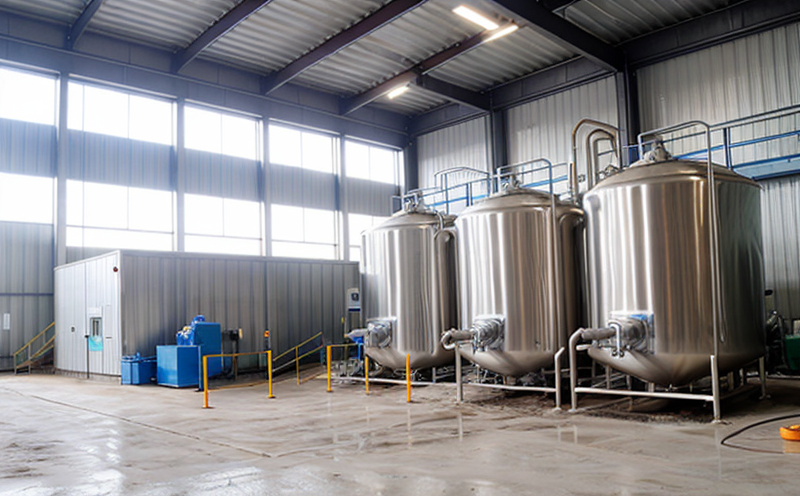EPA 608 Organochlorine Pesticides Test in Industrial Water
The EPA 608 method is a critical analytical tool used to detect organochlorine pesticides in industrial water. This test plays an essential role in ensuring the safety and compliance of water used in various industrial processes.
Organochlorine pesticides are known for their high persistence, bioaccumulation potential, and toxic effects on human health and the environment. Regular monitoring is necessary to prevent contamination, protect workers, and comply with regulatory standards such as EPA Method 608.
The test involves a series of steps that ensure accurate detection and quantification of organochlorine pesticides in water samples. This includes sample collection, preservation, extraction, concentration, clean-up, and analysis using gas chromatography-mass spectrometry (GC-MS).
Sample preparation is crucial for achieving reliable results. Proper sampling techniques are essential to avoid contamination or loss of target analytes. After collection, samples must be preserved at appropriate temperatures until they can be processed further.
The extraction process involves using solvents like dichloromethane (DCM) and methanol to extract organochlorine pesticides from the water matrix. Following extraction, concentration is achieved through distillation or vacuum evaporation methods. Cleanup steps are necessary to remove interfering components before analysis.
Analysis is performed via GC-MS due to its high sensitivity and selectivity for detecting trace levels of these persistent organic pollutants (POPs). Calibration standards are prepared using known concentrations of the target organochlorine pesticides to establish a calibration curve. This allows for accurate quantification during the analysis.
Results from this testing help industries ensure they meet stringent environmental regulations and protect worker health by identifying potential sources of contamination early on. By adhering strictly to EPA Method 608, laboratories can provide robust evidence that supports compliance efforts and demonstrates commitment to sustainable practices.
- Quality Assurance: Rigorous quality control measures are implemented throughout the entire testing process, from sample collection through final analysis. This ensures consistent results across multiple samples and over time.
- Data Validation: Independent verification of analytical data is conducted to confirm accuracy and precision. This includes comparing results with reference materials and re-running suspect samples as needed.
In addition, the use of modern analytical techniques ensures that even very low concentrations can be detected accurately. This level of sensitivity allows for early detection of potential issues before they become significant problems.
Benefits
The EPA 608 Organochlorine Pesticides Test in Industrial Water provides numerous benefits to both industrial operations and regulatory bodies:
- Regulatory Compliance: Ensures that industrial facilities are meeting all applicable federal, state, and local regulations regarding water quality.
- Risk Management: Identifies potential risks associated with the presence of organochlorine pesticides in process waters. Early identification allows for corrective actions to mitigate these risks effectively.
- Sustainability: Supports sustainable practices by minimizing environmental impact through proactive management of water resources.
- Worker Safety: Protects workers from exposure to harmful chemicals by ensuring that industrial processes are conducted safely and responsibly.
Quality and Reliability Assurance
To maintain the highest standards of quality and reliability, our laboratory adheres strictly to EPA Method 608. Our procedures encompass every aspect of the testing process, including sample preparation, calibration, and data analysis.
- Sample Preparation: All samples are handled with care using proper techniques to avoid contamination or degradation.
- Calibration Standards: Calibration is performed regularly using certified reference materials to ensure accurate quantification.
- Data Analysis: Results are reviewed by experienced analysts who apply rigorous quality control measures to catch any errors early on.
Customer Impact and Satisfaction
Our customers benefit significantly from our EPA 608 Organochlorine Pesticides Test in Industrial Water service. By providing reliable, accurate results, we help them stay compliant with regulatory requirements while also enhancing their reputation for environmental stewardship.
- Compliance Assurance: Customers receive detailed reports that document all aspects of the testing process, ensuring full transparency and accountability.
- Risk Reduction: Early detection allows customers to take action promptly, reducing potential risks associated with non-compliance or contamination incidents.





